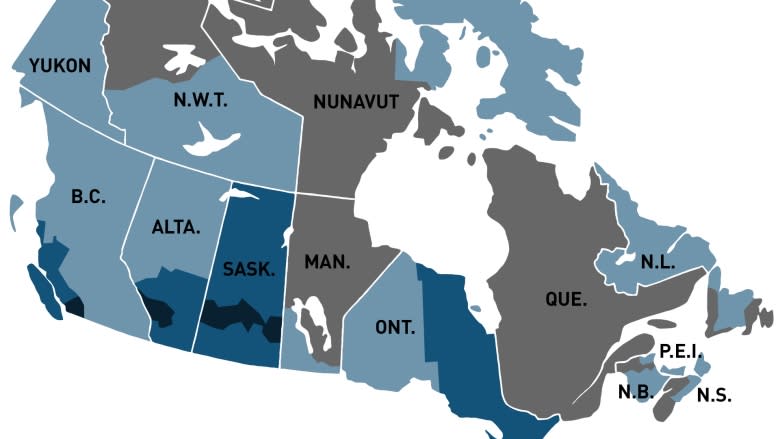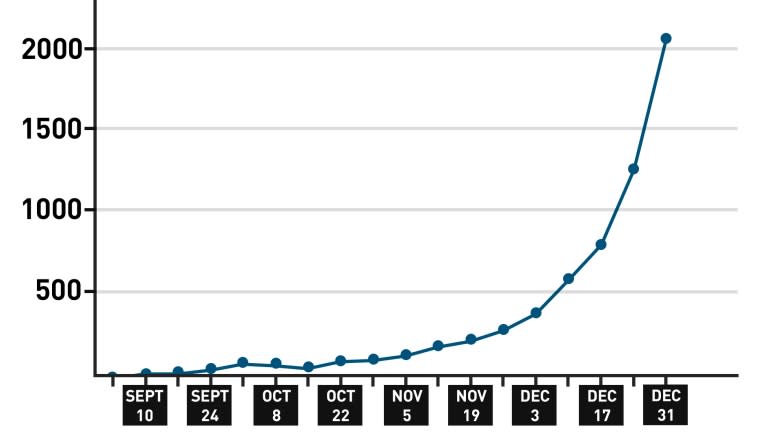A lasting holiday gift for Canadians: the flu
The latest national flu statistics posted Friday paint the familiar feverish post-holiday picture, with outbreaks of influenza and similar illnesses flaring in many regions of Canada.
It makes sense after the holiday season, said Dr. Danuta Skowronski, physician epidemiologist at the B.C. Centre for Disease Control.
"During that period there is lots of social mixing because of the festive activities," she said.
"The very young, parents, grandparents, the elderly, lots of hugging in close contact, we did expect there would be further amplification."
It's an epidemic — technically
A few regions in Alberta, Saskatchewan and B.C. are even reporting epidemic influenza. But experts are using the e-word in a technical sense.
"Influenza season is an epidemic, yes, because we have sustained transmission in the community and also in the facilities, so it would definitely meet that definition," said Dr. Silvina Mema, medical health officer at B.C.'s Interior Health Authority.
But people should not alarmed by the word epidemic, said Skowronski. "It just implies that it is widespread."
Experts warn the flu seasons is not over yet. Cases are likely to peak within a few weeks.
The influenza subtype causing most of the confirmed infections is H3N2, which tends to hit older people harder and cause more severe symptoms.
So far 20 flu-related deaths have been reported across Canada, almost all of people over 65. Most people in hospital with the flu are also over 65.
Long-term care facilities hardest hit
All the provinces and territories except Nunavut are grappling with influenza outbreaks in long-term care facilities.
In B.C., residential care facilities have been especially hard hit, with at least 40 facilities reporting flu outbreaks. For the patients, their families and the facility staff, it's a difficult time.
"First of all, we enforce precautions, enhance cleaning and hygiene, and people who are sick ask to stay in their rooms, receive their meals in their rooms," said Mema. "In addition, we tend to discourage any social activities."
If flu seems worse this year, there's a reason. Last year was a mild season, because the H1N1 strain was the dominant circulating bug and it tends to cause less severe illness.
But it's still not as bad as two years ago, during the winter of 2014-15 when H3N2 was also dominant. There is less overall influenza activity this year, and only half as many people have gone to hospital with the flu.
Average risk of flu? Once in 20 years
Not only does H3N2 tend to hit harder, it also tends to be less responsive to the flu vaccine, which usually offers less than 50 per cent protection against the H3N2 subtype.
Without a flu shot, the average person faces a five per cent or lower risk of becoming infected with influenza virus. That translates into one bout of flu every 20 years.
With a vaccine that is 50 per cent effective, a flu shot cuts the risk in half, meaning an average adult would get the flu just once in 40 years, said Skowronski.
"If you think about it, cutting your risk of hospitalization or death by half is really important protection for people with high-risk conditions," Skowronski said.
It's still not known how effective this year's flu vaccine is. Skowronski is gathering the information and expects to have the answer by the end of January.
Among seasonal virus villains, influenza always gets top billing, but there are lots of other viruses making people sick right now, a mix of common cold bugs and other respiratory pathogens.
But if you want to dodge the influenza bug, the best places to be in Canada are Quebec, northern Manitoba, Nunavut, or the western regions of Nova Scotia and Newfoundland.




